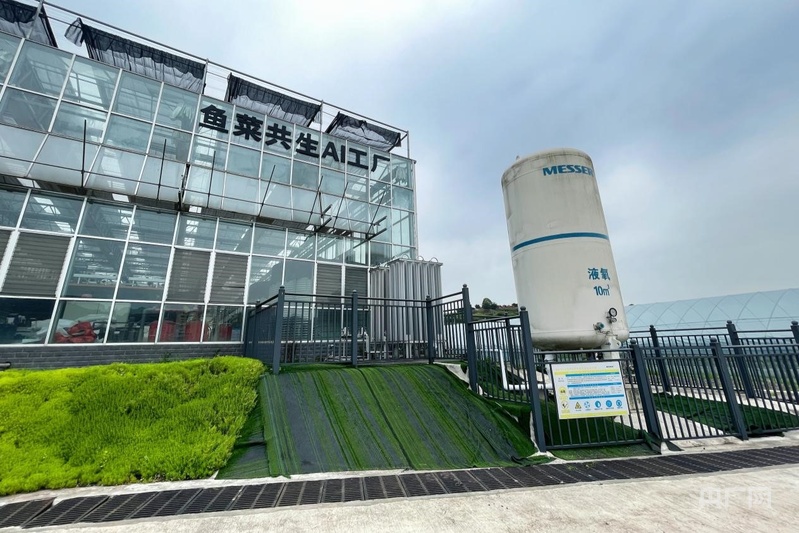On Jan. 1, 2020, China enacted a 10-year fishing ban across key sections of the Yangtze River in order to protect biodiversity, and it widened the ban to include all of the river’s natural waterways and major tributaries as well as natural waterways associated with large lakes connected to the Yangtze on Jan. 1, 2021. Additional bans of various lengths and scales have also been imposed on other natural Yangtze River basin waterways. The measures are seen as a critical part of addressing the depletion of biological resources that has occurred after decades of overfishing, pollution, and damming and restoring ecological balance along the country’s longest river.
Situated in southwestern China at the upper reaches of the Yangtze, Chongqing is one of the country’s four municipalities with provincial-level status, the other three being Beijing, Shanghai and Tianjin. Often referred to as the “Mountain City,” it features rugged terrain dominated by hills, low mountains, plateaus, and valleys and contains minimal flat land. Among China’s most populous cities, Chongqing has a permanent population exceeding 32 million and an urbanization rate of approximately 70%.
Traditional pond-based fish farming is both land-intensive and polluting in such a geographically challenging region. It occupies valuable arable land and often results in untreated waste being discharged into water sources.
In 2016, researchers at the Chongqing Academy of Agricultural Sciences (CAAS), a research institute with 15 divisions, began exploring a more sustainable approach – transforming waste into usable resources and integrating aquaculture with hydroponics – which led to the creation of China’s first AI-powered aquaponics facility. The facility was completed in 2019 and moved into production trials soon after and was officially ready for commercial use by 2022.
“The project ensures stable supply, relieves ecological pressure, conserves farmland, eases labor shortages, and addresses other problems related to fishing during the decade-long ban,” Gou Xiaohong, president of the CAAS, mentioned in June 2022.
Inside China’s first AI-equipped aquaponics facility

A view of the Chongqing Academy of Agricultural Sciences (CAAS) AI-powered aquaponics facility. The facility is located on the research academy’s campus in Chongqing municipality. (Photo by Chen Jing / China National Radio)
The facility stands on one hectare of land at the academy and integrates advanced technologies, such as a recirculating aquaculture system, state-of-the-art hydroponics and smart automation. Key systems, including feeding, oxygenation, temperature regulation, water replenishment, and waste processing, are fully automated.
Fish are raised in temperature-controlled pools that feature recirculating water systems and AI-powered rail-mounted robots that analyze fish behavior using big data in order to optimize feeding schedules, while leafy greens are grown in multi-layered vertical hydroponic racks using soilless, water-efficient methods in the 2,000-sq. m vegetation zone.
The aquaponics system is designed to operate in challenging environments beyond Chongqing – from offshore islands to cold, high-altitude regions – as well and thus facilitate a reliable supply of fresh agricultural products in such areas.
Innovation makes it possible to recycle over 95% of water and nitrogen resources
A multi-unit cascade treatment system at the heart of the facility recycles and repurposes resources. A purification module maintains water quality, a waste collection and treatment module converts fish waste into nutrient-rich liquid fertilizer, a hydroponic module absorbs the fertilizer – eliminating the need for chemical nitrogen fertilizer – and a sterilization unit safeguards biosecurity throughout the ecosystem. The integration of these technologies makes it possible for over 95% of water and nitrogen resources to be recycled internally.
High-density aquaculture enables the facility to sustain populations of medium- and high-value species at levels up to 50 times higher than what is achieved when using traditional methods. The precisely controlled environments also make it possible for largemouth bass to attain a much higher survival rate and reach harvest size in just 6 to 8 months, which is much faster than the 18 that are usually required.
Operating as a fully automated vertical farm, the vegetation zone features innovations such as tidal-style seedling systems – hydroponic or soilless cultivation methods that deliver water and nutrients to the plants that are grown by mimicking natural tidal cycles – automated greenhouse robots that monitor the plants and tend to them, and a 15-layer vertical farming system that optimizes photosynthetic efficiency and plant growth via tailored light wavelengths that are applied using spectral regulation technology. The technologies make it possible to realize 8 to 10 crop rotations per year, resulting in overall yields being 5 to 10 times higher than what would be achieved using conventional farming methods.
As of late June 2025, the system has been deployed across multiple districts and counties in Chongqing as well as in other provinces and regions in China, such as Xinjiang, Shaanxi, Anhui, Jiangxi and Shandong. Over the next three to five years, the CAAS team aims to further develop AI integration and optimization, standardize and modularize the system, and create a complete set of equipment in order to enhance precision, intelligence, efficiency, and productivity, facilitate broader rollout, and promote competitiveness in the market.
CAAS researchers have also been developing other symbiotic farming models involving plants, animals, and microorganisms, such as a rice-fish system and a fruit-fish system, in order to give rise to more-diversified food supply systems, further expand the boundaries of farming and improve resource utilization. They also plan to provide cross-disciplinary skills training to a new generation of farmers so as to promote agricultural modernization and rural vitalization.